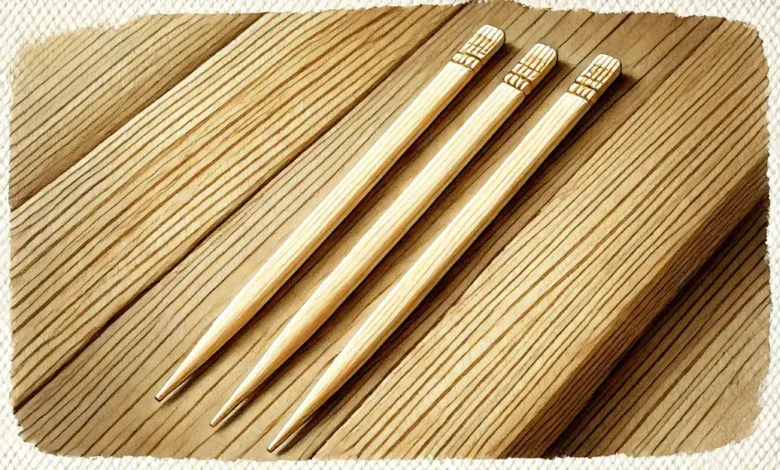Why do Japanese toothpicks have grooves?

Japanese culture is known for its attention to detail, and this is evident even in the smallest objects, such as toothpicks. Why do Japanese toothpicks have grooves? This tiny design feature is not just a random choice but a blend of functionality, aesthetics, and cultural significance.
Japanese toothpicks producer has exposed the truth about toothpicks. Are they meant to be used to identify used toothpicks?
A toothpick is an extremely useful tool. In addition to flossing, they can be used for a variety of non-food purposes, including as cleaning small, hard-to-reach nooks…

In Japan, when you buy a bento box or get disposable chopsticks at a convenience store, you often get a toothpick too. These toothpicks are special because they have a little groove at one end. But, not all toothpicks have this groove, only the ones that are made in large numbers. The fancy ones that are made by hand don’t have it.
Now, you might wonder, why is the groove there? Well, a lot of people in Japan and other places have a habit. When they’re done using the toothpick, they break off the tip. They then use the broken part as a stand to keep the used end off the table. Since so many people do this, others think that’s why the groove is there in the first place. But, is that really why?
However, the person in charge of Japanese toothpick manufacturer “菊水産業株式会社” Kikusui Sangyo Corporation” (@kikusui sangyo) felt the need to clarify the matter: “When I tell people that I am in the business of manufacturing toothpicks, about 95% of people ask, “Is it correct to break the tips of toothpicks and use them as toothpick holders? However, the response is incorrect.

The company that makes these toothpicks, Kikusui Sangyo Corporation, says that the groove wasn’t made for the reason people think. But, people can use the toothpicks however they like. So, why is the groove there?
The story goes back to the 1950s in Japan. Back then, toothpick makers would start with a piece of white birch wood. They would shave it thin on both ends and then cut it in the middle to make two toothpicks. But, this method often caused the toothpicks to break.
To fix this problem, they decided to polish the ends with a machine that spins really fast. But, this caused another problem. The fast spinning made the toothpick get hot and turn black. So, the groove was actually a side effect of the polishing process.

Manufacturers are concerned that this may make toothpicks appear unclean and unsellable. When they were seeking for a solution, one of them suggested comparing the toothpicks to a Kokeshi – 小芥子, a traditional wooden doll.

The toothpick makers had a clever idea. They decided to turn the black end of the toothpick into something fun – a kokeshi doll. Kokeshi dolls are traditional Japanese dolls that have a simple trunk and an enlarged head, kind of like the black end of the toothpick.
To make this happen, they created a new kind of toothpick with a groove. They used a special grinder that had a bumpy surface to make the groove. Everyone liked the new design, so they started making all their toothpicks this way.
And guess what? These toothpicks became really popular! Now, most toothpicks made in Japan have this design. It’s a great example of how a problem can turn into something really cool, don’t you think?




